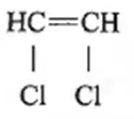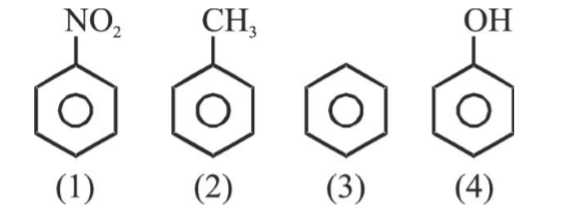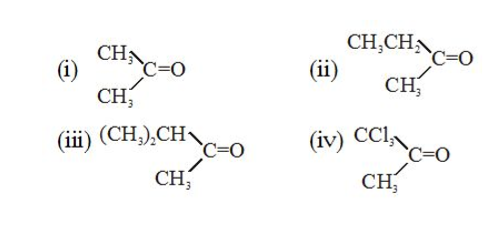Decreasing order of reactivity of HX in the reaction
ROH+HX→RX+H2O
HI>HBr>HCl>HF
HBr>HCl>Hl>HF
HCl>HBr>HI>HF
HF>HBr>HCl>HI
The correct Answer is:1
To determine the decreasing order of reactivity of HX in the reaction ROH+HX→RX+H2O, we need to analyze the nucleophilicity of the halides (X) involved in the reaction.
1. Identify the Halides: The halides involved in the reaction are Fluorine (F), Chlorine (Cl), Bromine (Br), and Iodine (I). These correspond to the acids HF, HCl, HBr, and HI.
2. Understand Nucleophilicity: Nucleophilicity is a measure of how readily a species donates an electron pair to form a bond. In this reaction, the halide ion (X-) acts as a nucleophile.
3. Trends in Nucleophilicity: In the halogen group (Group 17), nucleophilicity increases as we move down the group from Fluorine to Iodine. This is due to the following reasons:
- Size of the Atom: As we move down the group, the size of the halogen increases. Larger atoms have more electron shells, which means the valence electrons are further from the nucleus.
- Effective Nuclear Charge: The effective nuclear charge experienced by the outermost electrons decreases down the group, making it easier for the larger halide ions to donate their electrons.
4. Order of Nucleophilicity: Based on the above understanding, the order of nucleophilicity for the halides is:
I−>Br−>Cl−>F−
This means that Iodide (I-) is the most nucleophilic and Fluoride (F-) is the least nucleophilic.
5. Relate Nucleophilicity to Reactivity: Since the reactivity of HX in the given reaction is directly related to the nucleophilicity of the halide ion, we can conclude that:
- HI (Iodine) will be the most reactive.
- HBr (Bromine) will be next.
- HCl (Chlorine) will follow.
- HF (Fluorine) will be the least reactive.
6. Final Order of Reactivity: Therefore, the decreasing order of reactivity of HX in the reaction ROH+HX→RX+H2O is:
HI>HBr>HCl>HF
Final Answer:
The decreasing order of reactivity of HX is:
HI>HBr>HCl>HF
- Size of the Atom: As we move down the group, the size of the halogen increases. Larger atoms have more electron shells, which means the valence electrons are further from the nucleus.
- Effective Nuclear Charge: The effective nuclear charge experienced by the outermost electrons decreases down the group, making it easier for the larger halide ions to donate their electrons.
I−>Br−>Cl−>F−
This means that Iodide (I-) is the most nucleophilic and Fluoride (F-) is the least nucleophilic.
- HI (Iodine) will be the most reactive.
- HBr (Bromine) will be next.
- HCl (Chlorine) will follow.
- HF (Fluorine) will be the least reactive.
HI>HBr>HCl>HF
The decreasing order of reactivity of HX is:
HI>HBr>HCl>HF
Similar Questions
Knowledge Check
Decreasing order of reactivity of HX in the reaction
ROH+HX→RX+H2OAHI>HBr>HCI>HFBBRr>HCI>HI>HFCHCI>HBr>HI>HFDHF>HBr>HCI>HIList the hydrogen halide acids in decreasing order of reactivity in the following reaction
R−OH+HX→RX+H2OAHBr gtHI gtHClgtHFBHIgtHBrgtHClgtHFCHIgt HFgt HBr gt HClDHIgt HCI gt HBr gt HFList the hydrogen halide acids in decreasing order of reactivity in the following reaction R−OH+HX→RX+H2O
AHI>HBr>HCl>HFBHBr>HCl>HCl>HFCHI>HCl>HBr>HFDHI>HF>HBr>HI
The order of reactivity of HX towards alcohol is
View SolutionDecreasing order of reactivity of hydrogen halide acid in the conversion of ROH→RX is:
View SolutionArrange following compound in decreasing order order of reactivity for hydrolysis reaction:
(I). C6H5COCl
(II).
View SolutionThe order of reactivity of halogen acids for reaction with C2H5OH is
View SolutionThe decreasing order of reactivity towards electrophilic addition (e.g. addition of HX,X2, etc.) of the following is :
I.CH≡CH
II.CH2=CH2
III. H2C=CH−Cl
IV
View Solution


